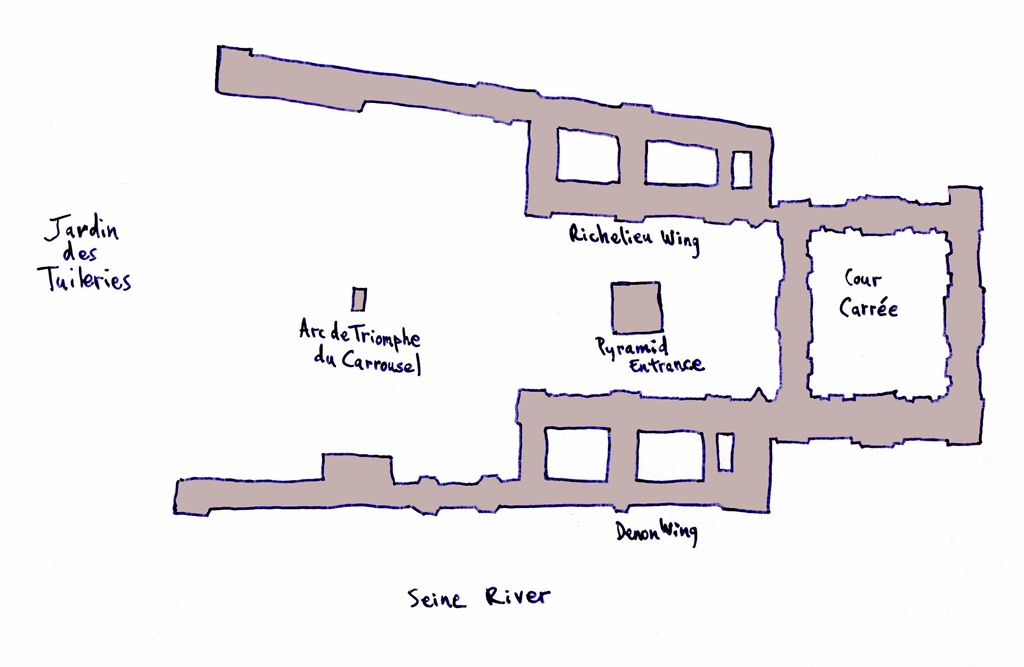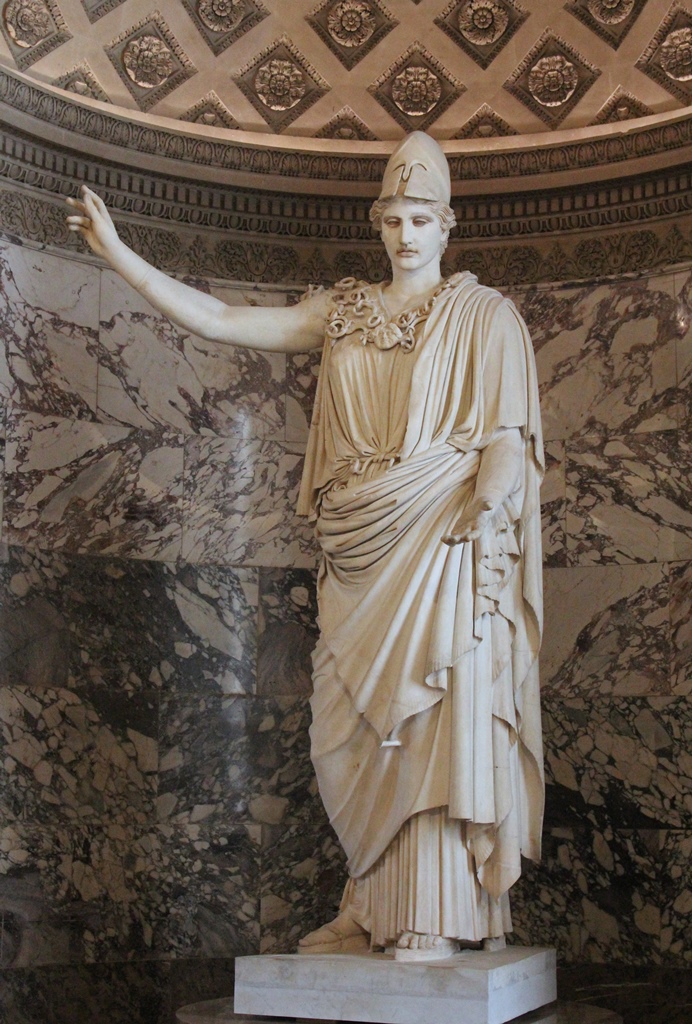The Louvre
The Musée du Louvre is unquestionably one of the world's great museums (some would
say the greatest, and I for one can't think of a convincing argument to the
contrary) and, at 652,000 square feet, also one of the largest. In fact it is so
large that I've split the coverage of it into two pages. It is also the most-visited
art museum in the world, with 8.5 million annual visitors (as of 2010). It didn't
start out as any kind of museum, though.
The origins of the word "Louvre" seem to be somewhat fuzzy, but in modern French it
seems pretty clear that it doesn't mean anything except "that gigantic museum on the
right bank of the Seine". The building was first established in the 12th Century as
a much smaller fortress for defense of the Seine's right bank from northern
invaders. This original building, which was located where the eastern end of the
Louvre is now, has been replaced by something much larger, but some of its
foundations are still visible to visitors.
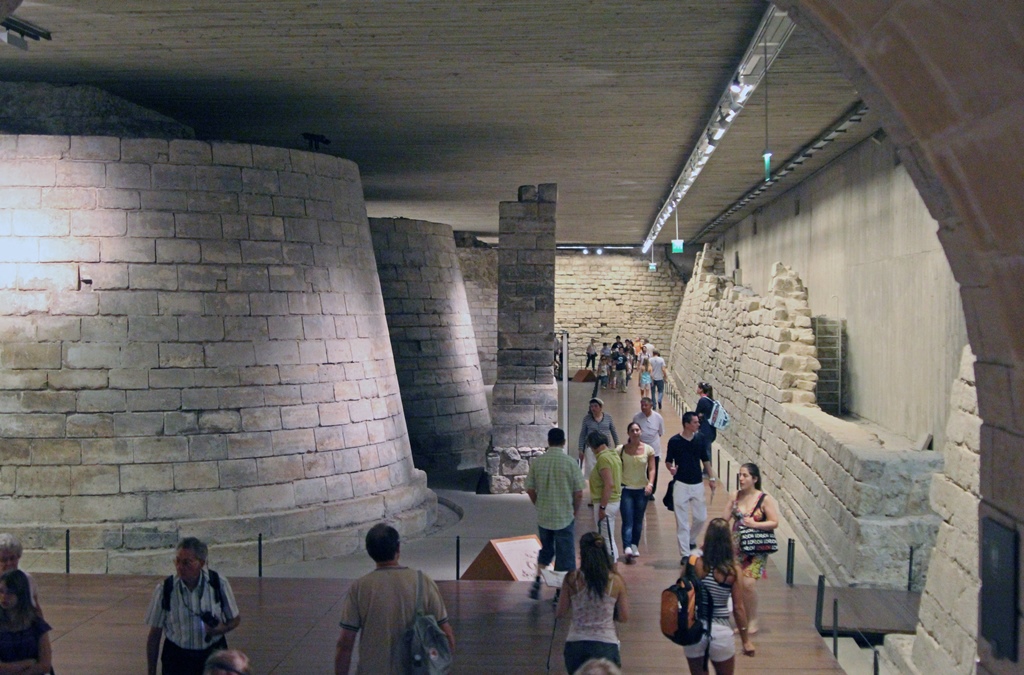
Remains of Medieval Louvre
The building was converted to a royal residence, and was enlarged in the 14th
Century by Charles V. In the 16th Century, Francis I had the old structures removed
and replaced by a building in the French Renaissance style. He also began an art
collection, acquiring (among other pieces) Leonardo da Vinci's Mona Lisa.
In the same century Catherine de' Medici had a palace built to the west of the
Louvre, called the Palais des Tuileries. Around the beginning of the 17th Century,
Henry IV had an immense, quarter-mile-long corridor built along the Seine's bank to
connect the Louvre and the Tuileries palace. He also invited artists and craftsmen
to live and work on the lower floor of this corridor. Later in this same century,
Louis XIII and Louis XIV added to the construction, until Louis XIV moved the royal
residence to Versailles. This allowed for more artists to move in. Under Louis XV
and Louis XVI the idea grew to convert the building into a museum, but this didn't
happen until the French Revolution, with the museum opening in 1793. At this time
the collection included items confiscated from the monarchy and various aristocrats,
and Napoleon was to add to it with items captured (some might say "looted") during
his campaigns. The museum was renamed the Musée Napoléon. Napoleon also had a
triumphal arch, called the Arc de Triomphe du Carrousel, constructed in the Louvre
courtyard, and had four famous bronze horses "borrowed" from St. Mark's Basilica in
Venice mounted on top of it.
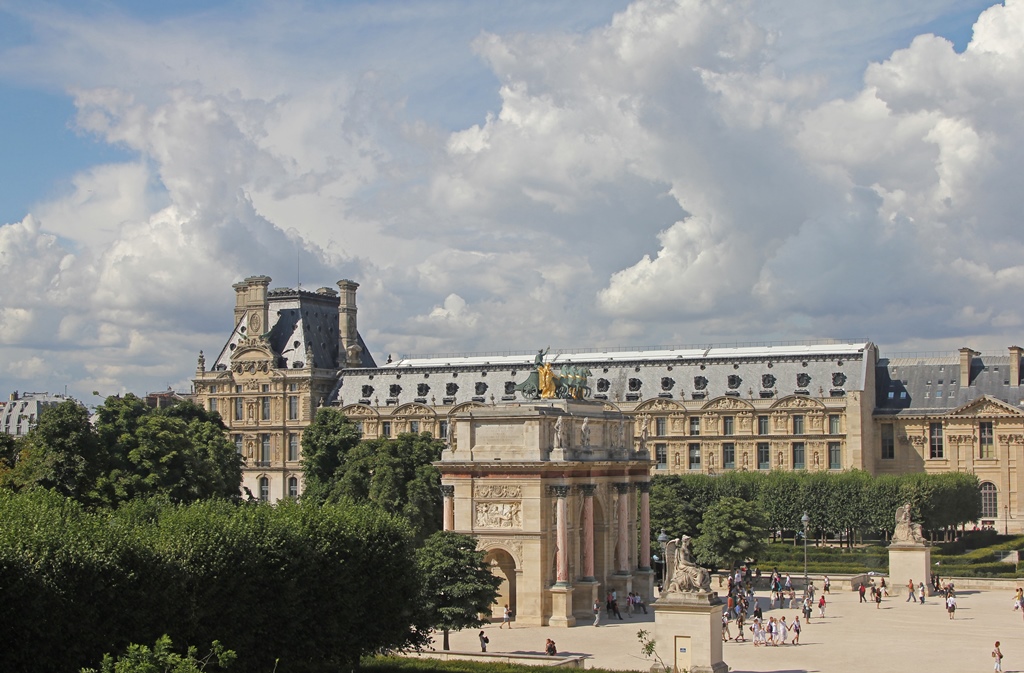
Arc de Triomphe du Carrousel
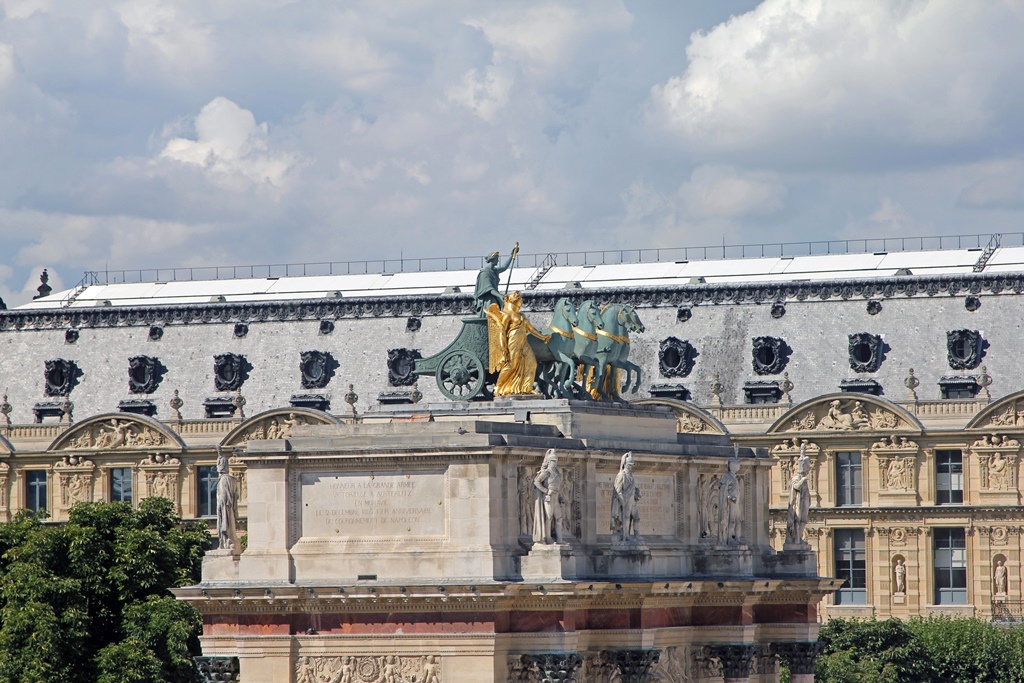
Horses Atop Arch
Napoleon also began construction of another long corridor to match the one along the
Seine, which would eventually create an immense courtyard, enclosed by the Louvre and
the Tuileries palace.
After Napoleon went away in 1815, much artwork (including the bronze horses - the
current ones are copies) had to be returned to places from which it had been
appropriated, but subsequent French leaders continued to add to the Louvre collection
through more legitimate means. In 1871, violence associated with the Paris Commune
resulted in the Tuileries palace being burned down, and it was never rebuilt. This
left the western end of the Louvre courtyard open to the Tuileries Gardens, which
remain today as public gardens.
As World War II approached, people began to fear for
the safety of the Louvre collection, so beginning in 1939, pieces began to disappear
from the museum, moving to secret places of safety throughout the country. When the
Nazis (notorious art collectors) marched in in 1940, they were disappointed to find
an empty Louvre. After the war, nearly all of the art magically reappeared.
In 1983, a more central entrance to the museum, with underground access, was
proposed. The job was awarded to American architect I.M. Pei, whose design included
a glass pyramid in the middle of the courtyard. Many Parisians (and others) were
outraged by the idea, but it happened anyway. The pyramid entrance opened in 1988,
and has become an accepted (and even admired) fixture. Also underground, a shopping
mall called the Carrousel du Louvre has appeared, opening in 1993. A number
of shopping mall type stores are tenants, including France's first Apple store and
even a McDonald's (many Parisians are not so happy about this).
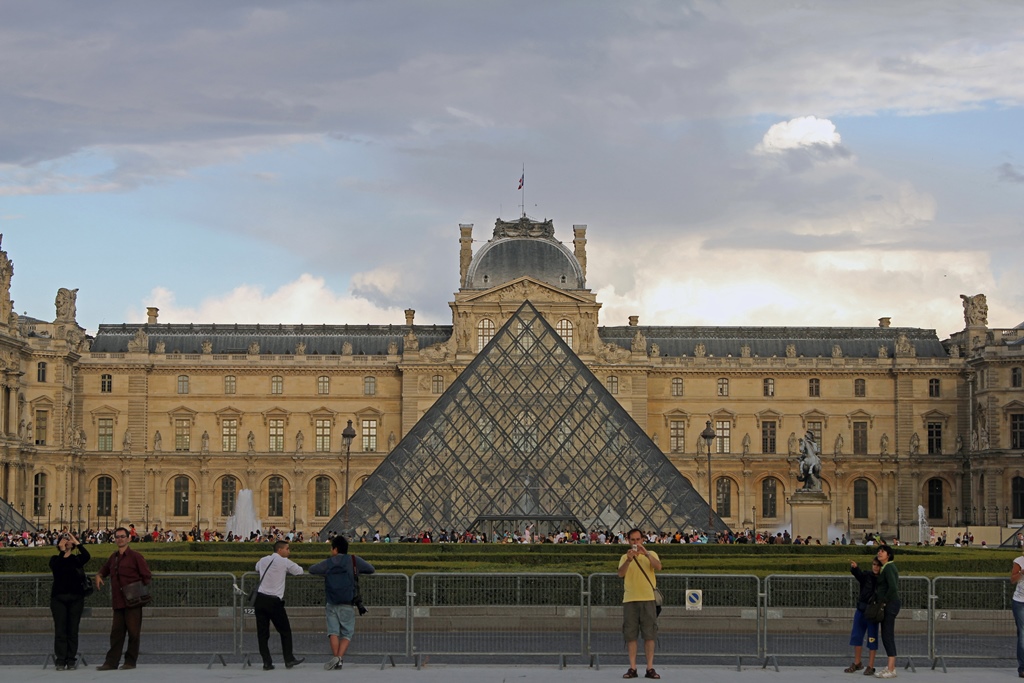
Pyramid Entrance
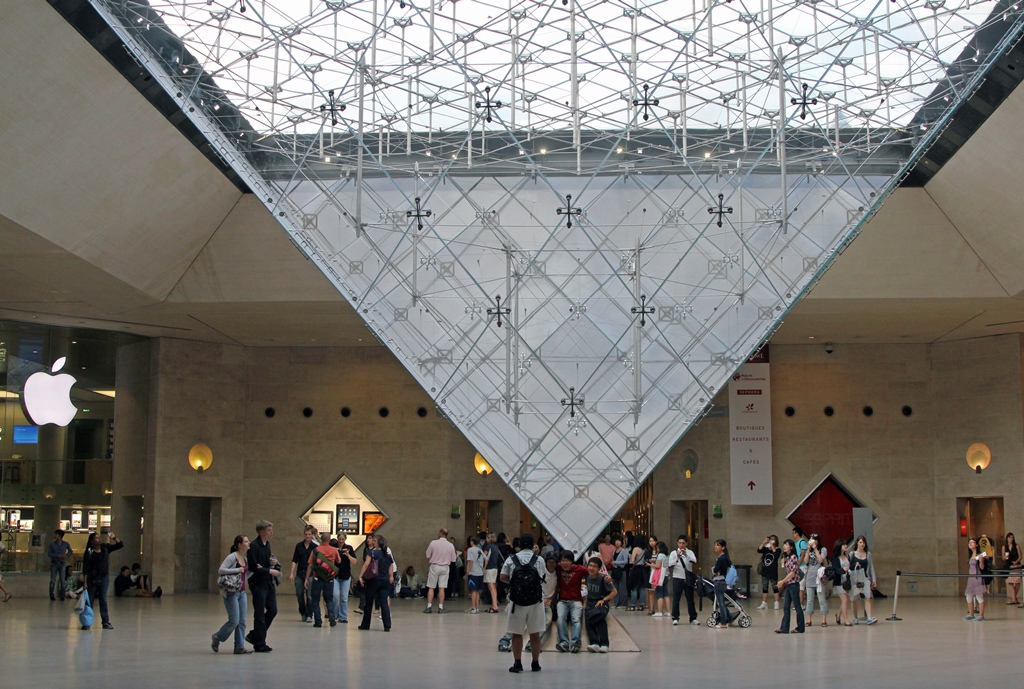
Shopping at the Louvre
On arriving at the Louvre, we were able to find the Museum Pass entrance without
much trouble (it's in the Richelieu wing, to the north) and had to pass through a
metal detector. We found non-flash photography to be allowed. On visiting the Louvre,
it's good to have a plan – as mentioned above, the place is huge, and it's simply not
possible to see everything in a few hours. We didn't really have a plan when we got
there, but we picked up maps, headed for a skylit area we saw and reconnoitered. We
found ourselves surrounded by French sculptures, which we decided were interesting
but not our first priority.
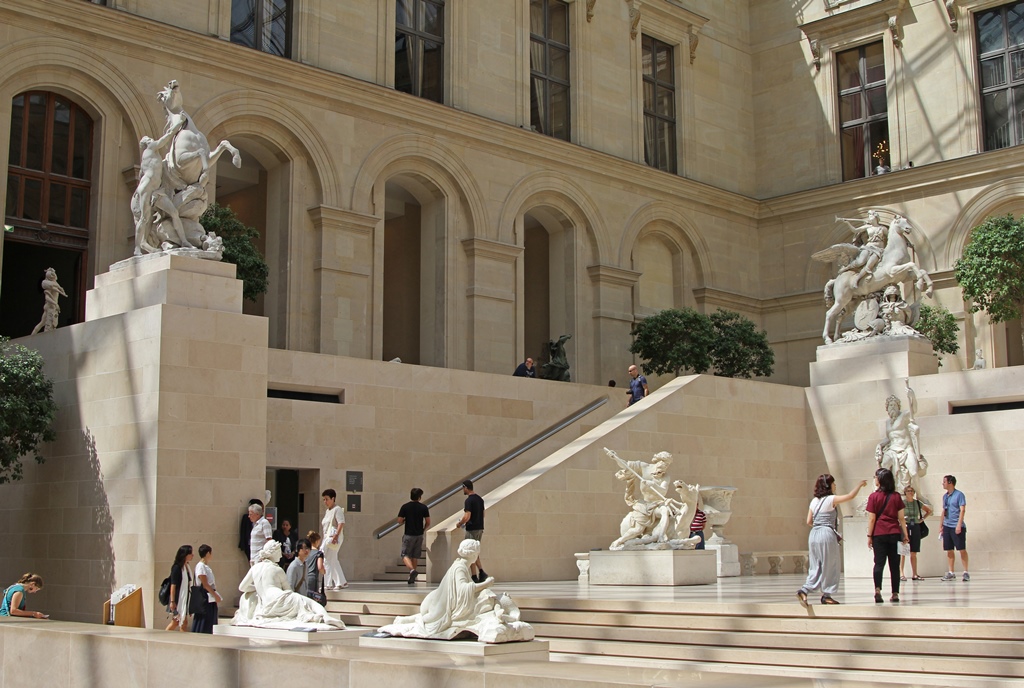
French Sculptures
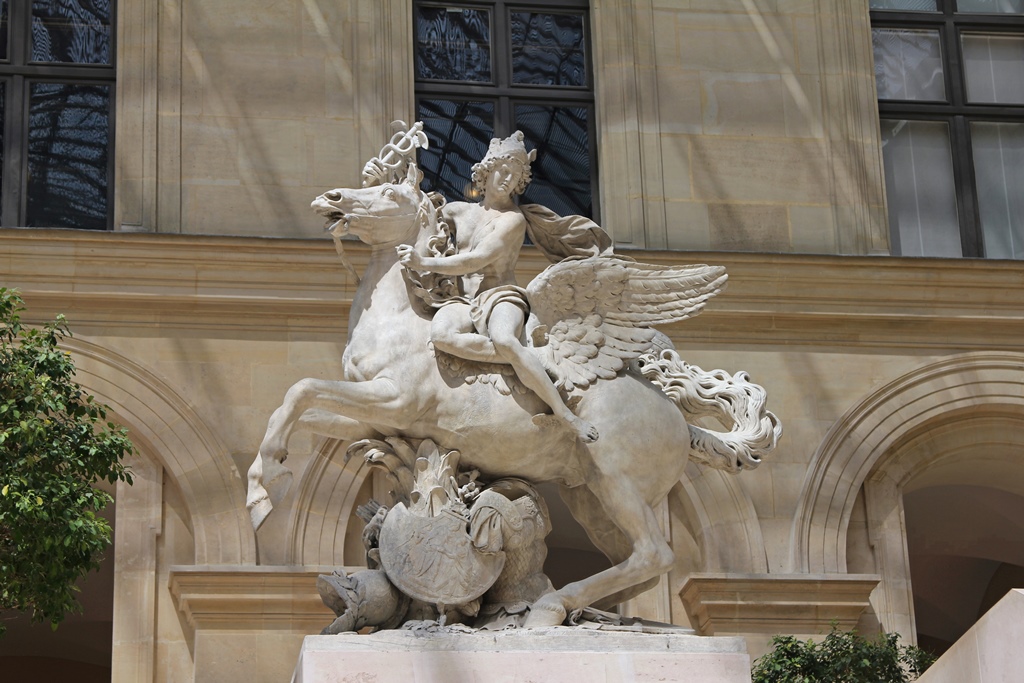
Mercury, Antoine Coysevox (1702)
Bob and The Loire and the Loiret, Corneille van Cléve
We figured out where we were and what we were near and what we most wanted to see (mainly
antiquities and paintings) and set off with a tentative route in mind. In addition to
art from the past few centuries, the Louvre has an extensive collection of antiquities
from the Middle East, Egypt and the Mediterranean area. Our route first took us through
the Middle Eastern antiquities.
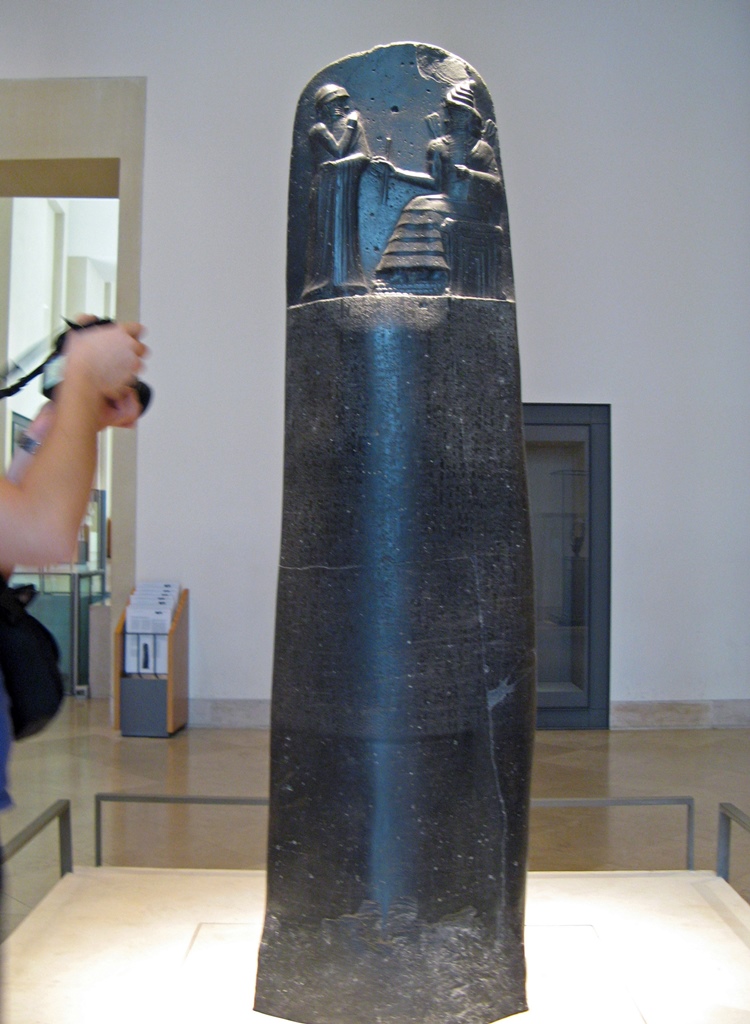
The Code of Hammurabi, Mesopotamia (12th C. B.C.)
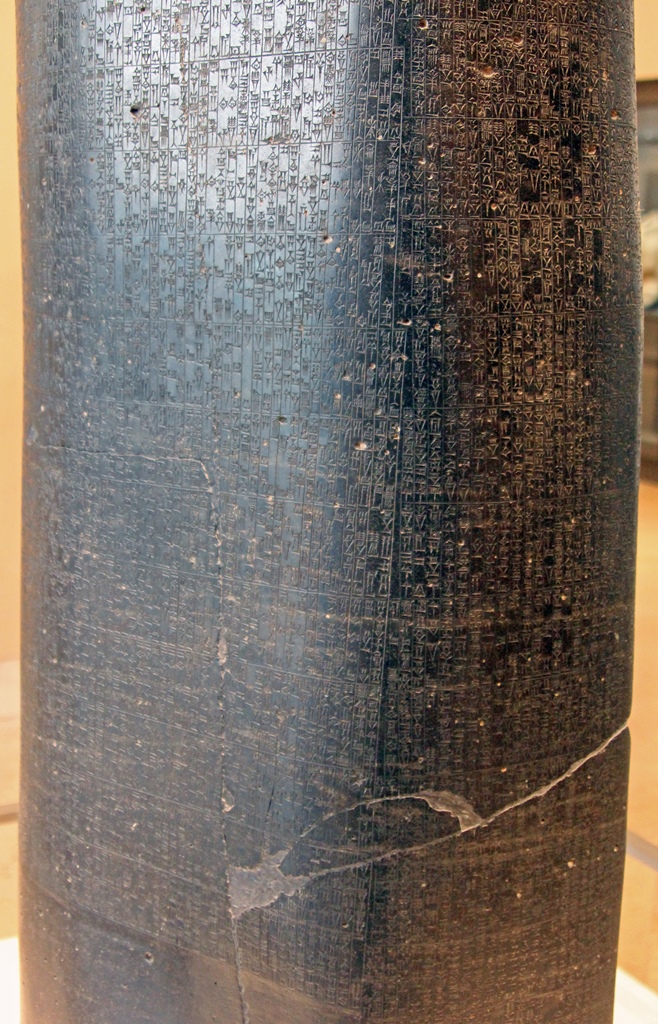
The Code of Hammurabi
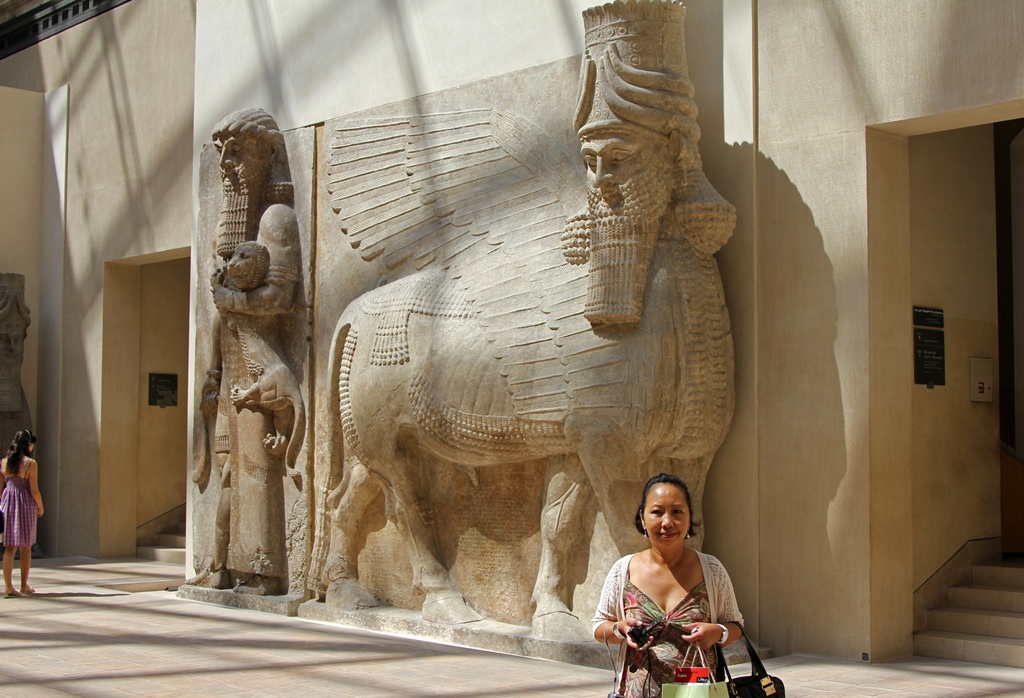
Nella and Androcephalus Bull, Mesopotamia (706 B.C.)

Winged Bulls and Reliefs

Assorted Reliefs
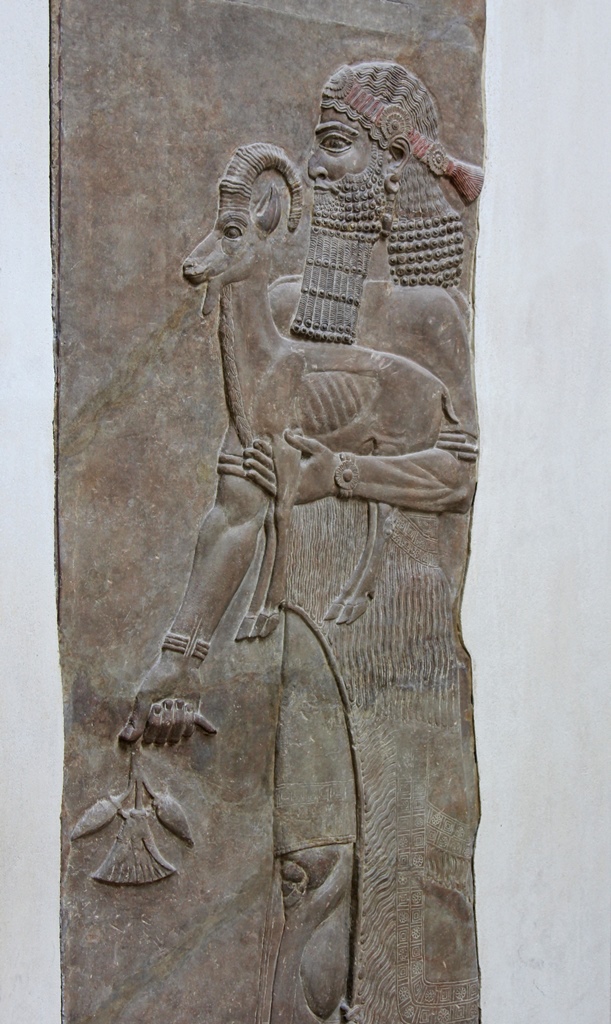
Relief of Man Carrying Goat
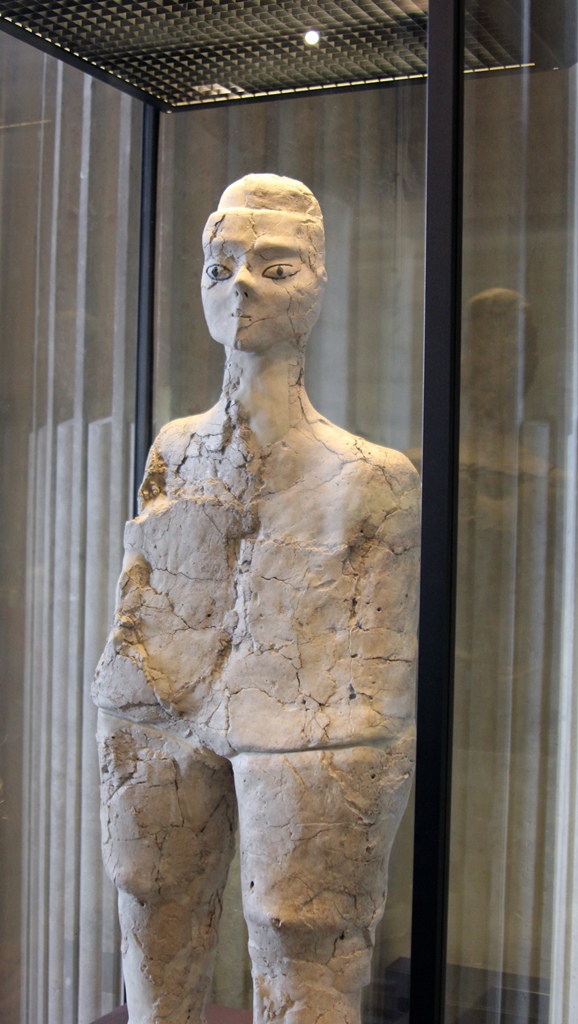
9000 Year Old Statue, Aïn Ghazal
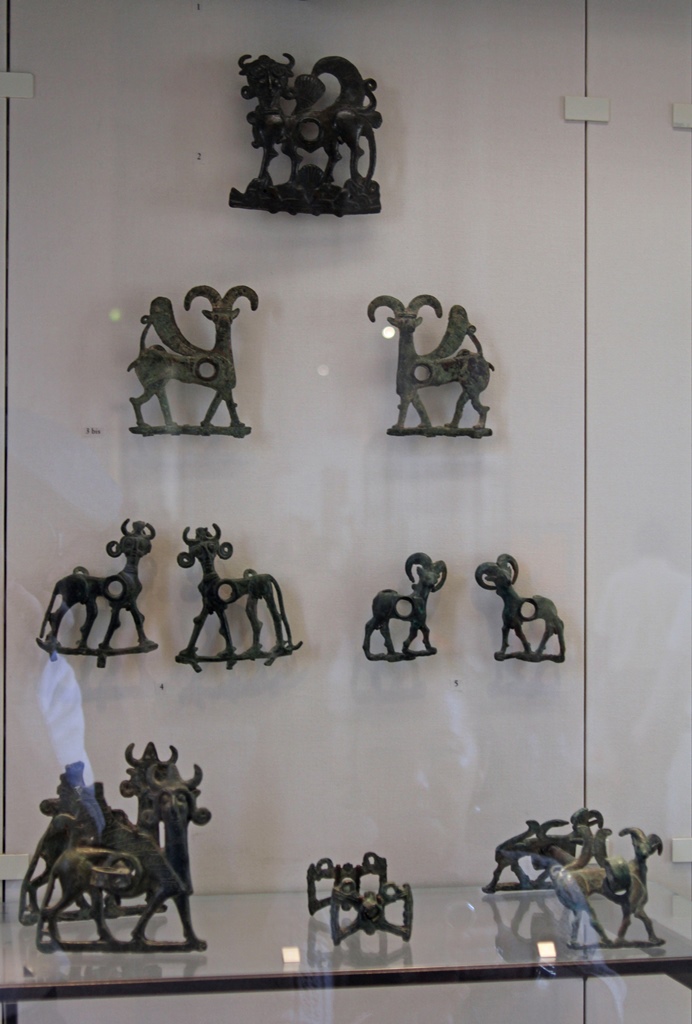
Iron Age Figurines, Iran (14th-6th C. B.C.)
We next found ourselves surrounded by artifacts from ancient Egypt.
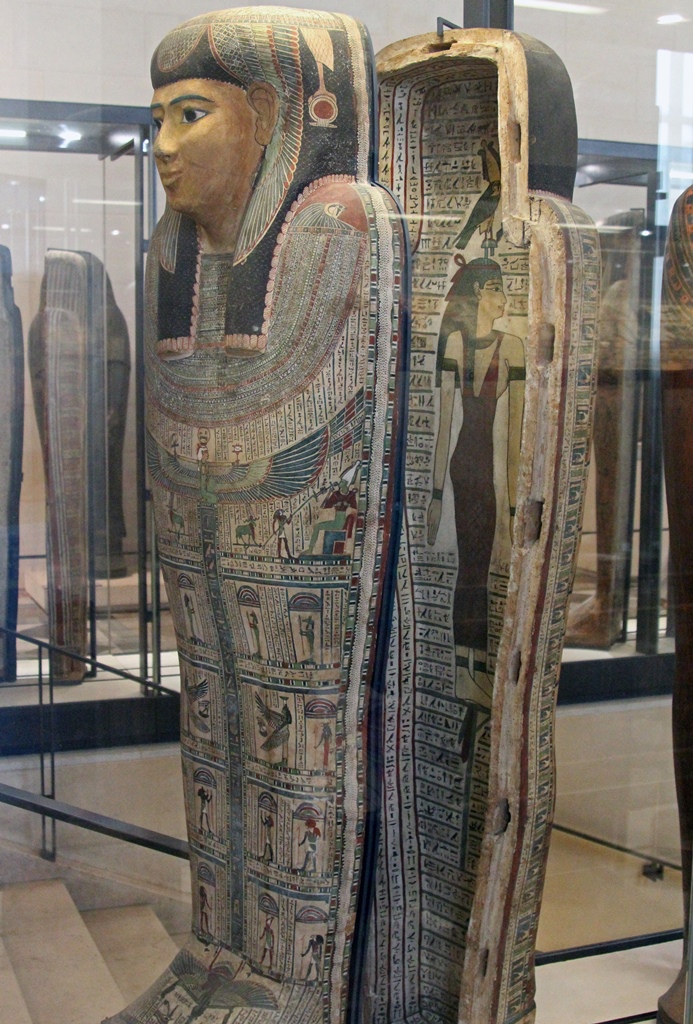
Sarcophagus
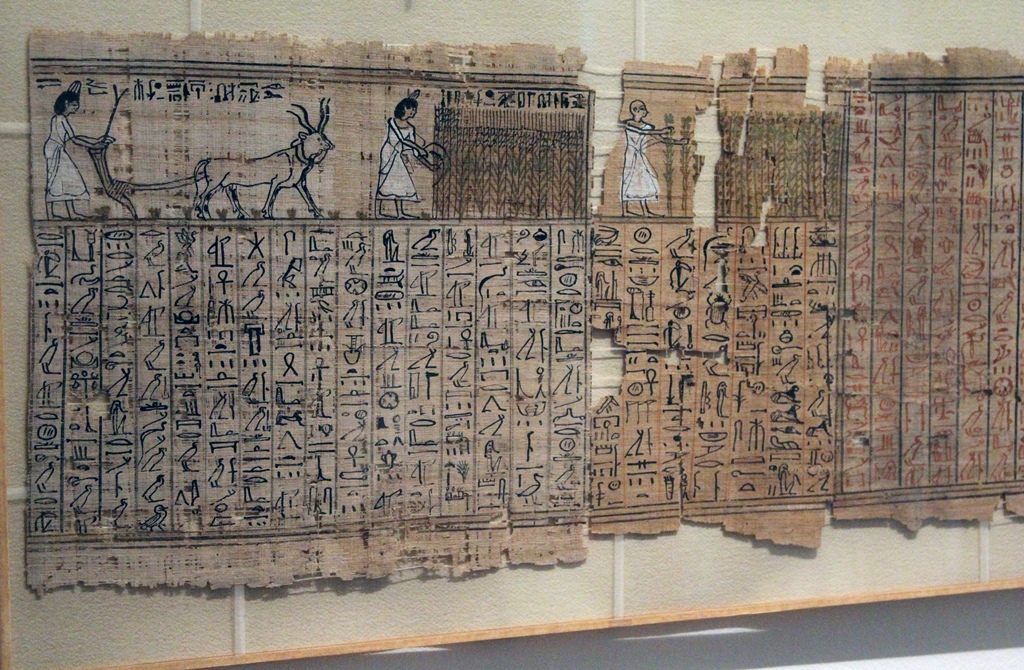
Papyrus Document

Tomb Figurines
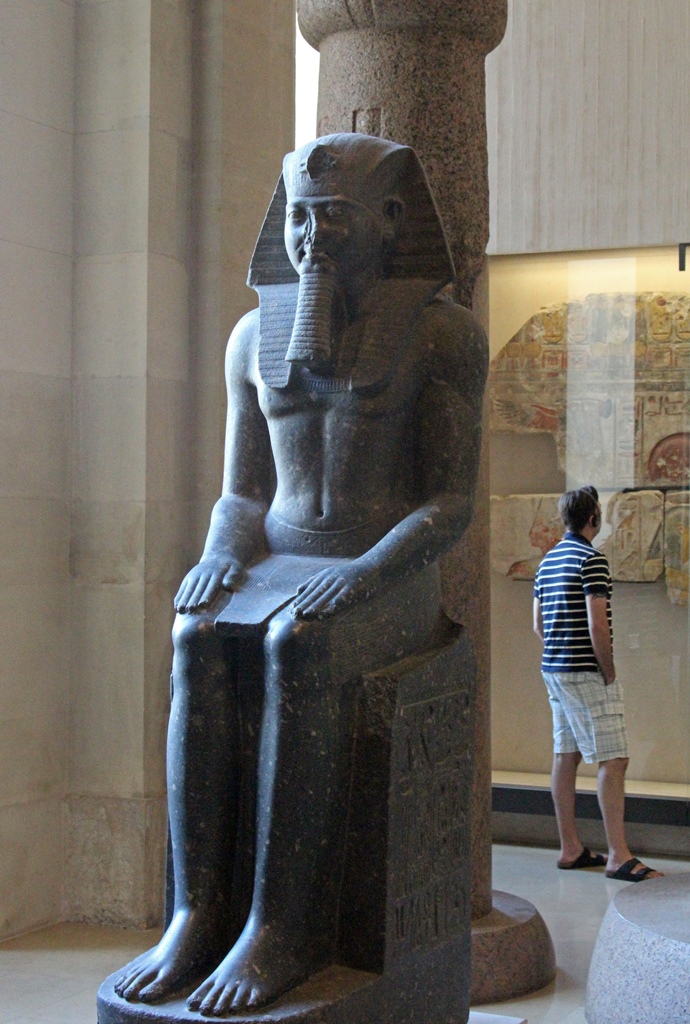
Tomb Statue
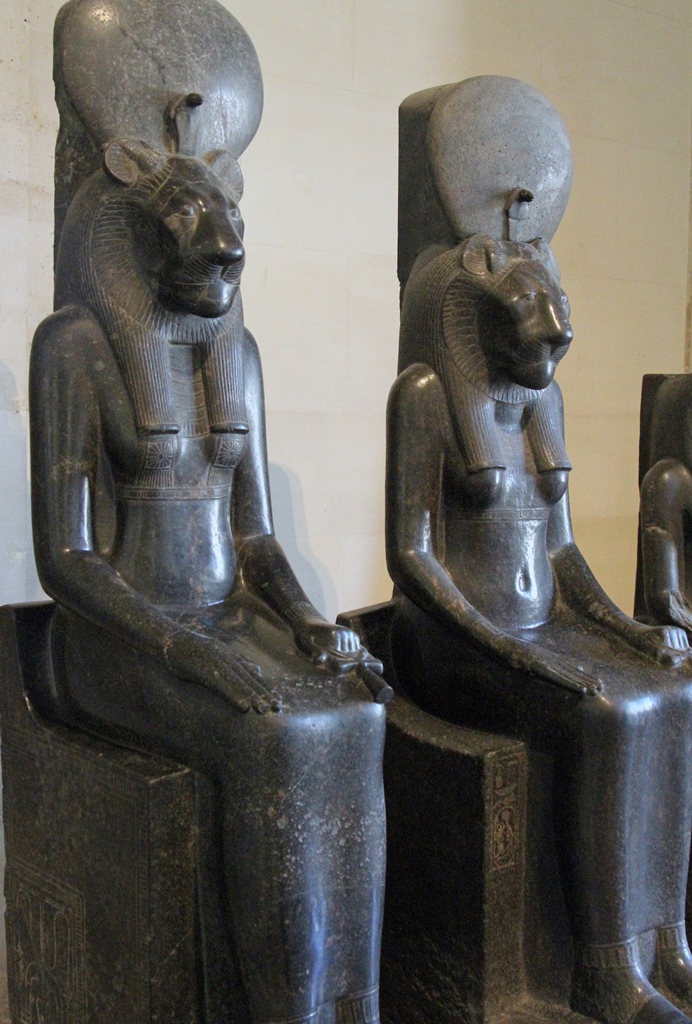
Lion Goddess (Sekhmet) Statues
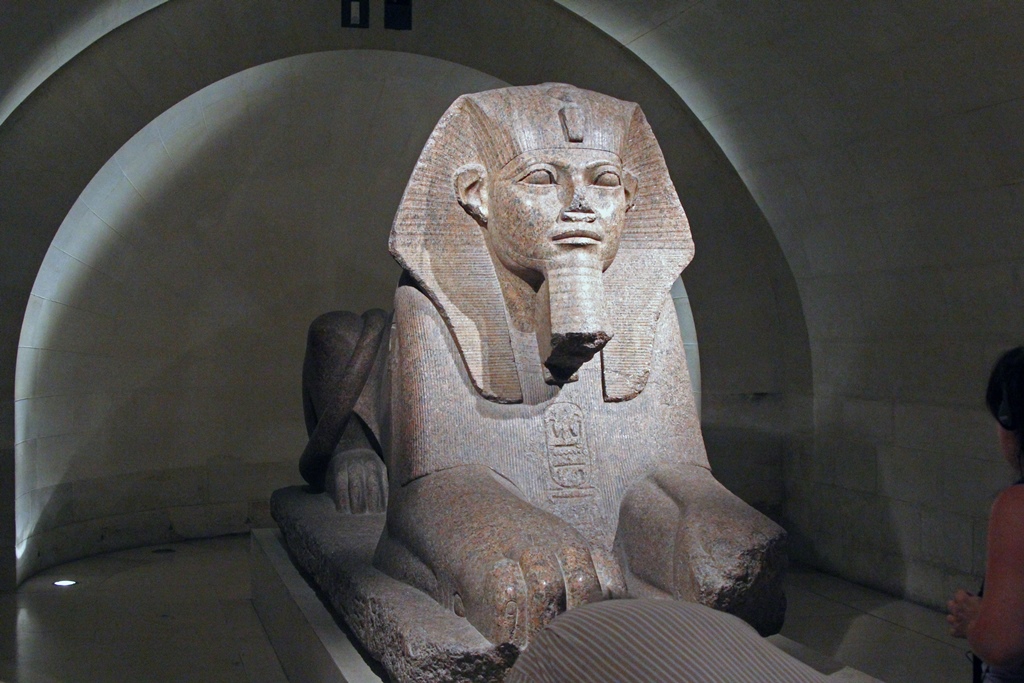
Crypt of the Sphinx
We finished up our antiquity adventures by viewing Roman and Greek statuary, including
the famous Venus de Milo and Winged Victory of Samothrace.
Athena of Velletri, Roman Copy (1st C. A.D.)
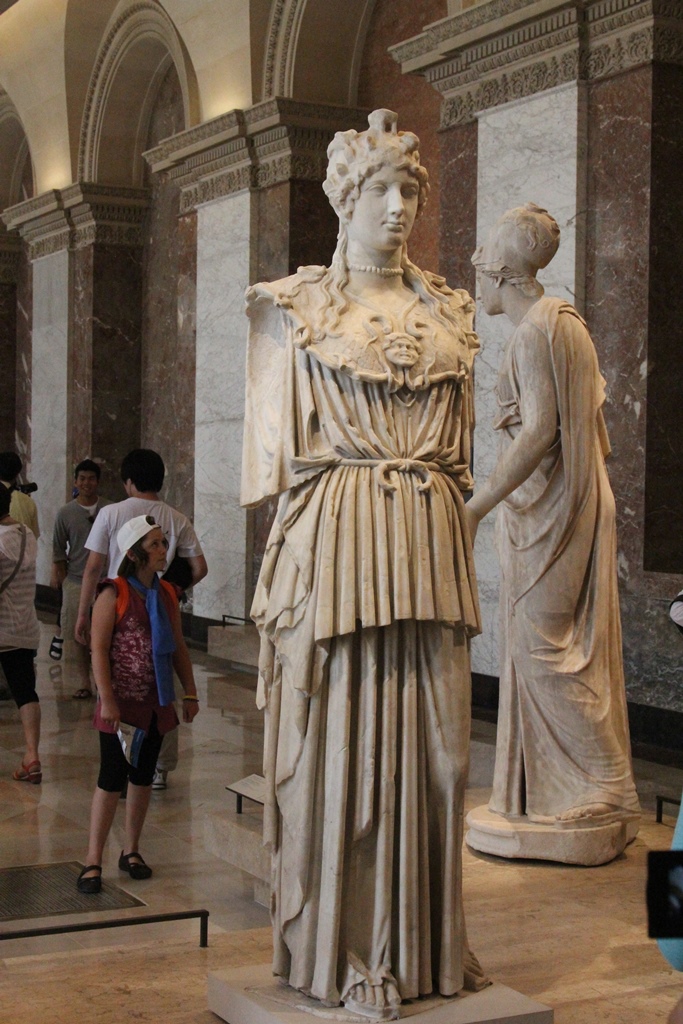
Athena Parthenos, Roman Copy (1st-2nd C. A.D.)

Apollo of Mantua, Ares Borghese, Venus of Arles
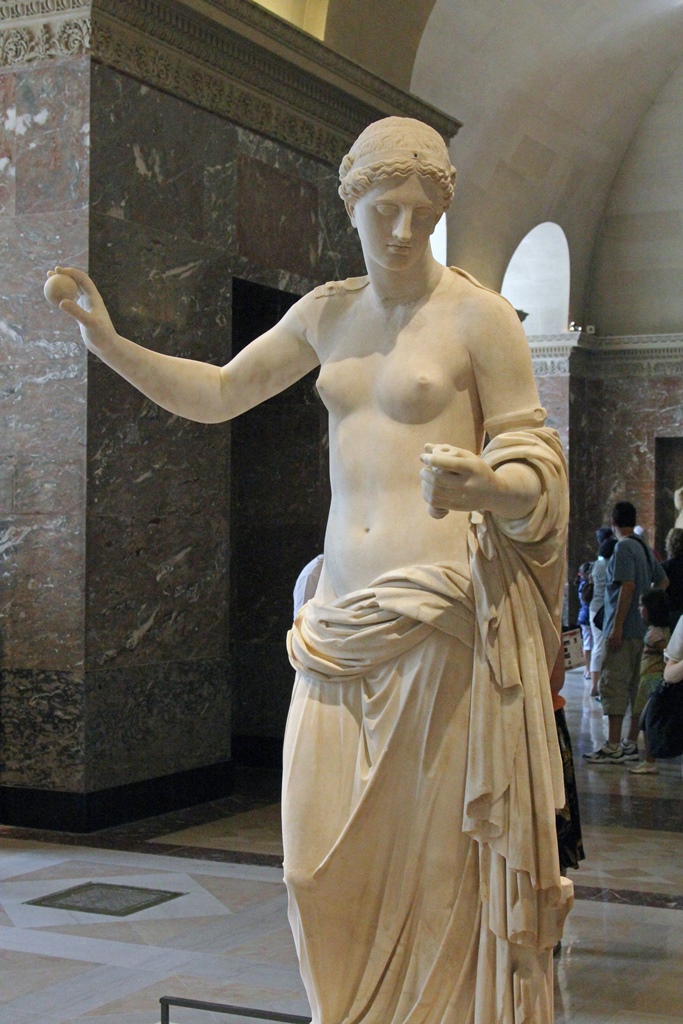
Venus of Arles, Roman Copy (1st C. A.D.)
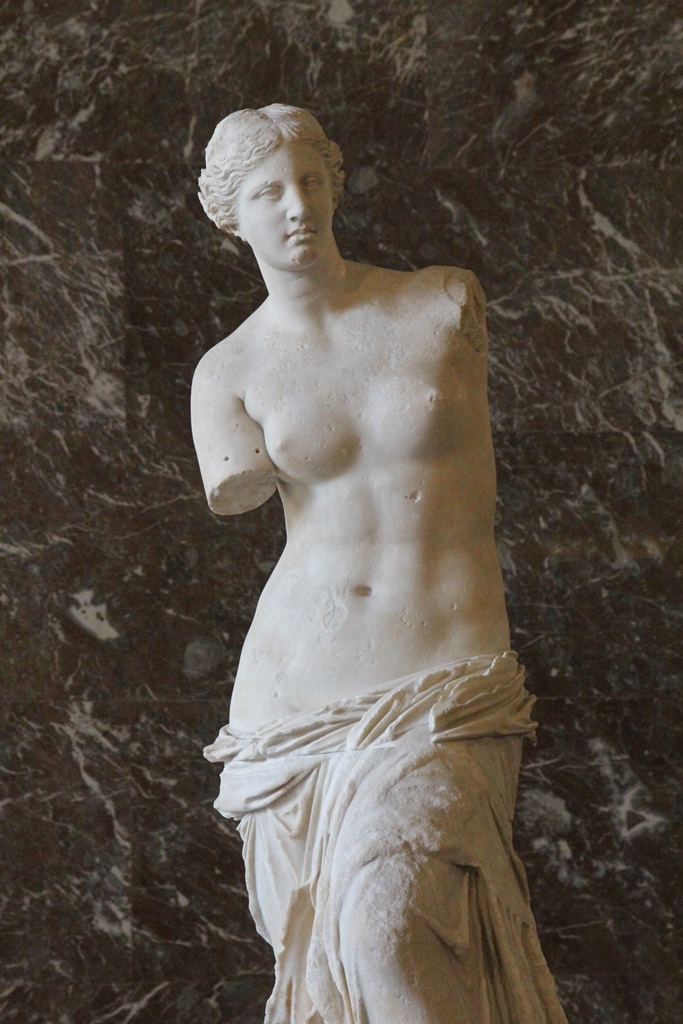
Venus de Milo, Greek (2nd C. B.C.)

Bob and Venus de Milo

Venus de Milo
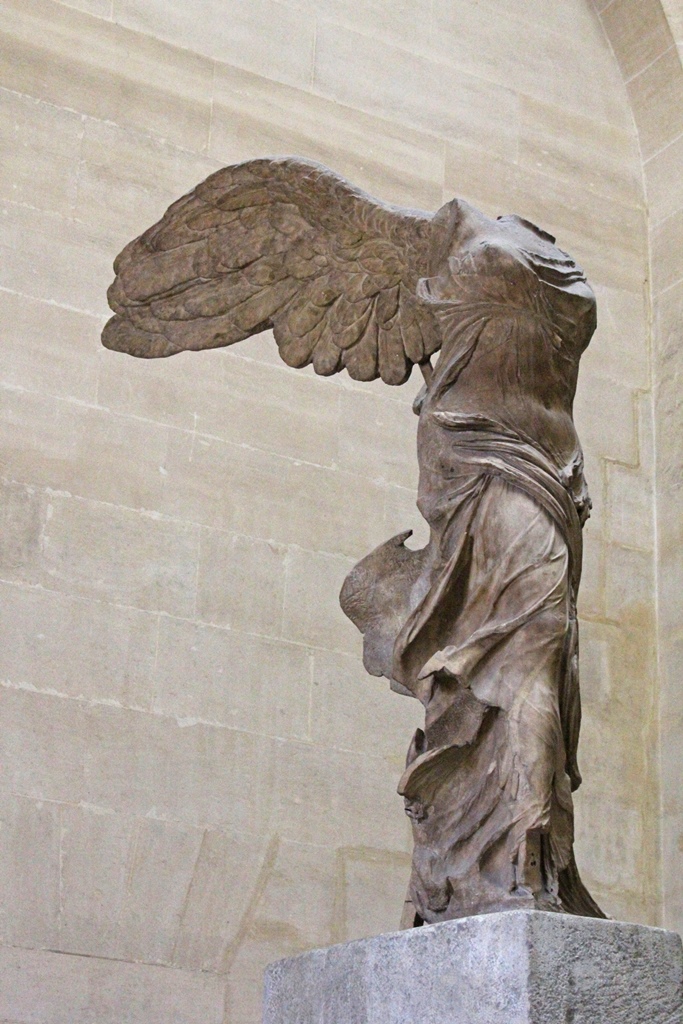
Winged Victory of Samothrace, Greek (ca. 190 B.C.)
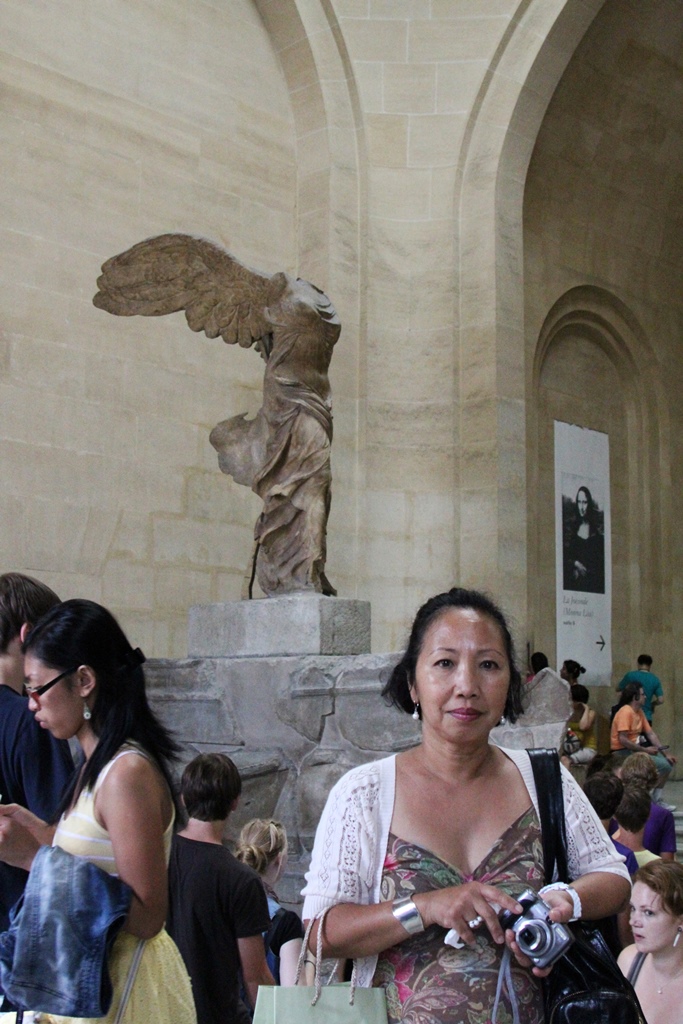
Nella and Winged Victory
Of course there was lots more than you see here - you can view much of it at
The Louvre website. But
we'd had enough for the moment, so we broke for lunch. Continue to the next
page to find out what happened next.

